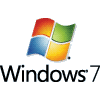It is simple to upgrade from Windows XP or Vista to Windows 7. MSN shows you here how to make the switch quickly and what to look out for.
First Step: Windows 7 Upgrade Advisor
“Just put the DVD in and hit install” may work for installing normal programs, but the same does not apply when installing a new operating system. If installed incorrectly, it is possible to
lose data and a lot of time. Microsoft knows this of course and has developed a software program called “Windows 7 Upgrade Advisor” that walks you through the most important steps of the installation. The software can be downloaded from this location: http://www.microsoft.com/windows/windows-7/get/upgrade-advisor.aspx. Don’t worry, it is free!
After a short installation, click the ‘Start Check’ button. The important thing to remember here is to make sure all of your network cables, USB devices and other peripherals are connected to the PC in order for the Upgrade Advisor to install necessary drivers. This way all of your devices will work straight out of the box when Windows 7 installation is completed.
The Upgrade Advisor runs through a checklist of processor, RAM, hard-drive, and external devices to see if your PC is capable of running Windows 7. It also checks if your machine can run the new ‘Windows Aero’ interface.
If all of the performance requirements check out, then you can move on to step 2.
Second Step: Back-up your data
Installing an operating system is a bit like moving house, it is important to take everything with you, so make sure to back-up your personal effects. Make a checklist of all the items and folders on your computer where you keep you data; like My Documents, My Music, My Pictures and so forth. Don’t forget to find all those saved e-mails, favourites, pictures, music and videos too. It is a good idea to back up all of this information once a month just in case your hardware crashes or you inadvertently fall victim to a virus, but it is doubly important to do so before changing operating systems.
The quickest and easiest way to back-up your data is to copy all of it to an external hard-drive or USB stick, however purists may prefer trusting their data to CD or DVD. For those of you still using Windows XP, there is a handy back-up tool fit for just this occasion! To find: Open the Start menu, click on ‘All Programs’, then select ‘Accessories’, The back-up utility can be found hiding in the ‘System Tools’ folder.
If using Vista you have even more choice, with two backup options at your disposal:
Create a complete backup of your system. Visit the Start menu and navigate to ‘All Programs’, ‘Maintenance’. Open the backup software and click on ‘Back-up Computer’ to begin the process. This will create an image of your hard disk but won’t save your user accounts, settings, internet preferences or favourites..
Windows Easy Transfer tool. The Windows Easy Transfer tool essentially backs-up all your important data; user accounts, folders, settings, internet settings and favourites. Open the Start menu and type “easy” in the search box, Windows Easy Transfer should appear in the search results Once started it will suggest that you close all other programs for best results and even offers to close them for you with one helpful button. Follow the prompts and when your PC has rebooted select a destination for the backed-up data.(again, choose from external hard-drive, USB stick, CD or DVD). Once Windows 7 is successfully installed Windows Easy Transfer will return and configure your PC using your saved settings.
Third Step: Make Room
Officially Windows 7 requires 16GB of hard-drive space, but ideally set aside 30GB. With this extra room you can easily install any other desired programs alongside your new operating system.
Advanced tip: Want to create a partition on your hard-drive to install Windows 7 on? Type ‘computer management’ into the search box on the Start menu. Under the storage section, click on ‘Disk Management'. Right-click on the drive that will host Windows 7 (usually your C:/ drive) and select the option to make the hard-drive smaller. This will free up space for you to create an additional partition.
Fourth Step: Update or New Install
Windows 7 can be installed as an update for machines still running Vista. For anyone running Windows XP, it is highly recommended that Windows 7 be installed as a new installation. With Vista, it is very easy. After completing the earlier steps, just insert the Windows 7 DVD and follow the directions in the install wizard program to update your system. For XP users, after completing the preceding steps, boot up your computer from the DVD and the install wizard program guides you through the process. The complete installation takes only around 30 minutes, which is impressively fast when you think about it.
Old and New in Dual Boot Mode
If you are still not sure if you are ready for the upgrade to Windows 7, you can also install it alongside an existing operating system. This way you can make the transition easily and learn to use Windows 7 without having to completely abandon your older and more familiar surroundings. If possible, Windows 7 should be installed on its own hard-drive, or at least in its own partition if your system has only one hard-drive.







.jpg)

0 comments:
Post a Comment